Southeast Asia, my travel itinerary
Last update: 08/02/2021
Our blog continues to grow thanks to you, our readers. This post may contain affiliate links, which means we can earn a small commission if you make a purchase through them, at no extra cost to you. This helps us to continue to bring you more and support our work!
Even though I have returned from my tour of Southeast Asia at the end of 2013, 6 years ago as I’m writing these lines, I can’t help thinking about it. It’s like a song you love and can’t get out of your head. It does happen quite often to think to myself or to say “do you remember when we went to that little temple over there… and when we went to eat at that little place in the street… when we went to Cambodia…”. In short, my head is full of memories, it’s a fact and I realize having been able to make this 1-year tour of Asia was really one of the most beautiful experiences I had the opportunity to live.
In fact, I had started blogging in 2012/2013, mainly for allowing our family and friends to follow us during this trip. In the meantime, life had sort of caught up with me and I hadn’t been able to keep writing. I kind of picked up the torch by opening this travel blog in June 2017. I had already started to write about some Asian countries, but I thought it could be more interesting to talk about my itinerary in Southeast Asia and give an overview. I won’t explain here what you need to know to prepare a travel plan of Southeast Asia, as I plan to do it in another article. However: How did I choose my itinerary? Why did I choose it? What was my route in general? My favorites and disappointments of this long trip? Well, you’ll find all these answers here!
I know many of you are trying to prepare your vacations activities as best as possible. So, I advise you to take a look at this great site that compares prices for all the activities available in many places around the world, including Southeast Asia.
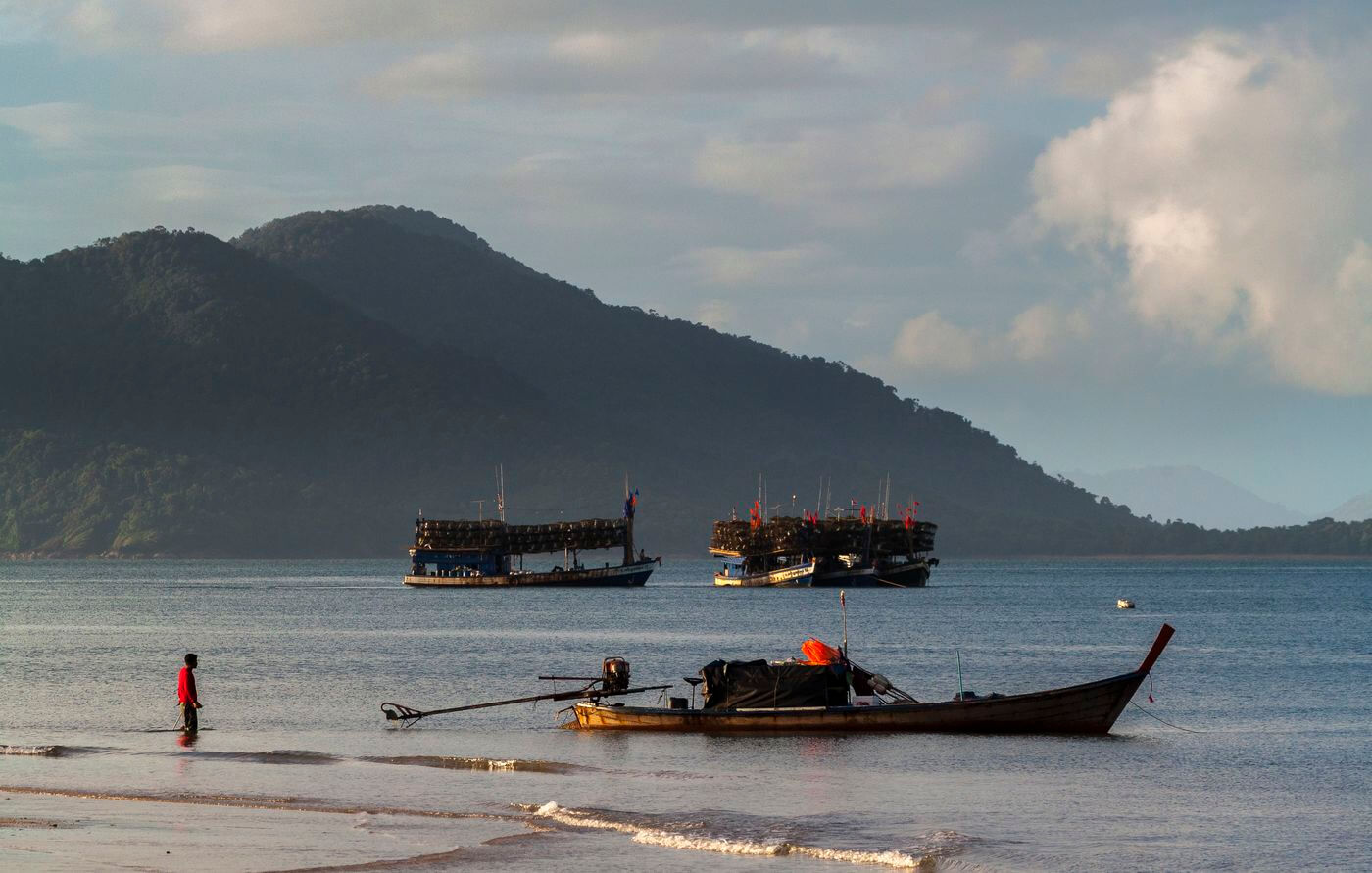
Small geography lesson
I’m sorry, but as a geographer, I often feel the need to write about geography in articles! Don’t be mad at me! Geographically speaking, the Southeast Asian region is considered to extend south of China/Japan, north of Australia and east of India. If we make a small list of autonomous countries, we have Burma, Brunei, Cambodia, Indonesia, Laos, Malaysia, Philippines, Singapore, Thailand, East Timor and Vietnam – a total of 11 countries and tens of thousands of islands! I visited 8 out of the 11, it’s not too bad (even if, honestly…we don’t really care about how many countries we’ve visited, it’s not a run, isn’t it?).
Southeast Asia Map
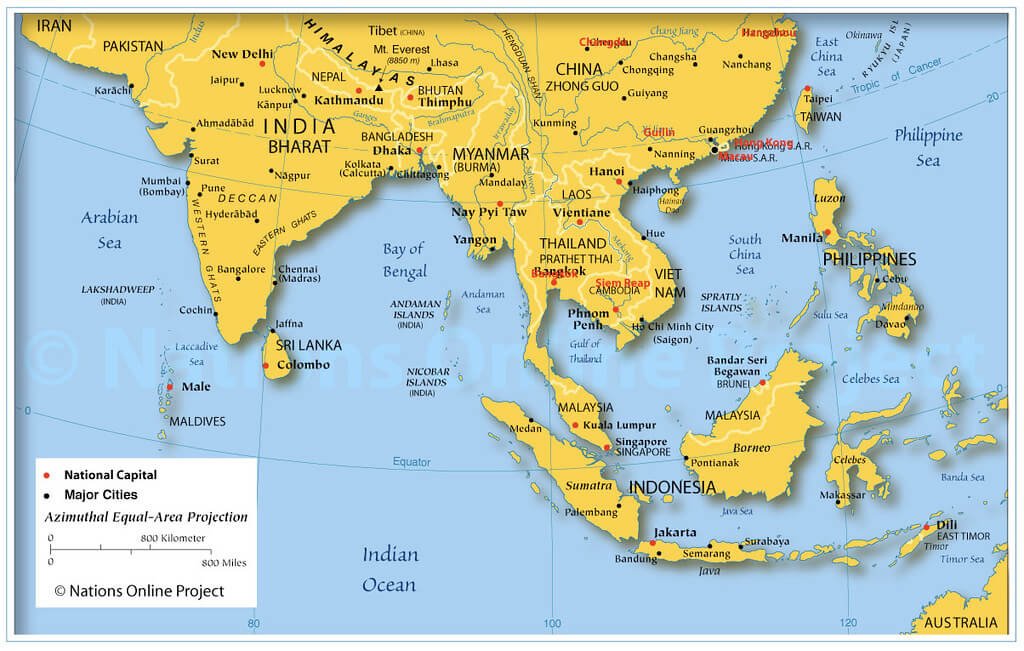
Choose the length of the trip and the locations
Back when my wife and I were thinking of going to Asia, we were living on the island of Mayotte, in the middle of the Indian Ocean. We decided to save money for a year and a half and then left for a one-way trip to the farthest reaches of Asia, a region of the world still unknown. Before leaving, we agreed on two things:
- Staying in Southeast Asia: it was a personal will not to choose to go “around the world”. It was a little less common at that time than it is in 2019, when everyone is doing it and wants to “travel the more they can”… We really wanted to take our time and especially not to run from one tourist spot to another. And with hindsight now, I’m glad I made the choice to focus only on a small region of the world. I really feel like I do know the area very well although some countries would have deserved that we spent more than the classic Visa month there.
- Going one-way was also a really important point for us. Indeed, the main idea of this trip was to discover a region of the world while taking our time as much as possible. What could be better than leaving without return dates? Because when you think about it, leaving with your return ticket means you already have a deadline in your sight. Leaving with a one-way ticket to an unknown destination was for us the ideal way to leave with an empty head, without having to think about the return, etc… The only thing you need to take into account in this particular case is having enough money aside to stay there, and especially to come back home when you want to. I could also write an article (certainly very critical) on travelers (those famous “begbackers” who beg for money in poor countries to be able to pay for their return ticket…).
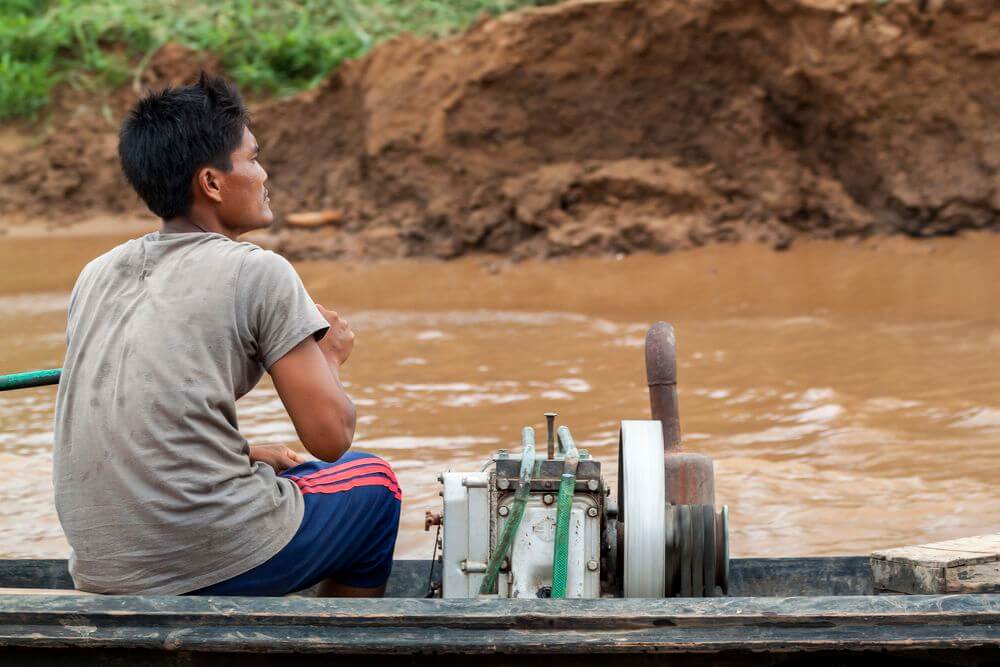

Organize your itinerary according to the weather forecast
This is a great debate we had at the beginning. Should we organize the itinerary of our trip or not at all? With more than 5 years of hindsight on my trip, I must confess that I was a little disappointed with the way we decided to travel. It is essentially my fault, I admit it, but I had decided to organize a kind of itinerary according to the weather – mainly to stay in the countries at the right time and to avoid the big monsoon periods, which can easily ruin a trip.
So, I relied on websites like Where and when to travel? which allow to visualize quite quickly which is the best season for each country. This is what we had planned before leaving, as an itinerary template.
December/January: Central/Western and Northern Thailand
February: Laos
March: Vietnam
April/May: Cambodia
May/June: Burma / Southern Thailand
June/July: Malaysia + Singapore
August: Indonesia Sumatra
September: Indonesia Sulawesi.
Except a few exceptions, that’s more or less the itinerary we followed. The only snag at the end of the trip was that we could not go to Sulawesi because we had to be evacuated by the travel insurance as we were sick in the middle of the jungle in Sumatra. But I’ll tell you more about it later on.
Anyway, if I had to do it again – and I hope I’ll do so that my little one could discover it – I wouldn’t plan that much, even on the weather side. At a pinch, to have a general idea of the countries I would like to visit, but nothing more. There are one-way flights from Paris to Bangkok for only 220/250€ and, once there, traveling in other countries costs almost nothing. That’s my plan! For Canadians planning a trip in the area, there are flights from Canada to Thailand, starting at 500$ if you are flexible.
My itinerary in Southeast Asia
Here is a small testimony of our trip in Southeast Asia. As I already said back in time, we should travel twice in Asia: a first time to visit the great tourist attractions (because, despite what we can say, we all go there!) and a second one to forget all these spots by getting off the beaten path. Basically, you take your Lonely Planet travel guidebook, and you don’t go to any place mentioned in the book. Cool idea, isn’t it? It might make you smile, but I’m not far from the truth. I travelled for a year, visiting all the touristic spots almost every time, and you may as well be prepared: you’re going to come across many (many!) tourists. We had a few moments where we pushed ourselves and deviated from the basic routes, and we keep such good memories of it! Because afterwards, it is not the city of Angkor, Ha Long Bay or Phuket we’ll remember from our trip in Asia. Well, at least not me!
Let’s go for a quick travel story in pictures, to make you want to discover the region.
Our beginnings in Western and Central Thailand
Our itinerary began as many others’ in Bangkok, Thailand, a few days before New Year’s Day. After enjoying the basic visits in Bangkok (The Royal Palace, Wat Pho and its lying Buddha, Wat Arun, floating markets, Khao San Road, Chinatown, etc.), we continue our route westward towards Kanchanaburi and the famous Kwai River Bridge. A nice stop on the riverside, but it is quite crowded. We keep going a little more towards the Burmese border to the city of Sangkhlaburi. This is a really nice area with only a few tourists. Here, you should rent a motorcycle for one or two days, and go for a walk at the border. Amazing experience off the beaten track. If you are wondering where to go to Thailand, here is an idea!
We then come back to Bangkok to keep following the classic route: Ayutthaya and Sukhothai. This is the cultural part, with many temple visits. We really appreciate, in particular the outside of the park of Sukhothai, the Si Satchanalai. A beautiful Indiana Jones atmosphere.



We follow the route towards Chiang Mai (way too many people for me) and Chiang Rai (already calmer). We rather quickly pass the area to arrive to a little village in the mountains: Mae Salong. We spend 4 days in these beautiful sceneries at altitude where it is good to live. Same advice again: rent motorcycles and get lost for a few days at the border of China. There are almost no tourists here, people don’t speak English and it’s perfect this way.
A very nice meeting with a French couple bilingual in Thai makes us change our route, and we go down along the Mekong towards the Nan region, at the Isan’s border. We spend a few days in this area, visiting traditional Thai villages and enjoying countryside life. Don’t look for tourists here: there are none. We even attend an unexpected funeral ceremony in a small village. A moment that will remain engraved in our memories.
The road still continues along the Mekong river towards Chang Khan (a famous village for Thai tourists) and Sangkhom (a small and quiet municipality on the riverside). If you have the opportunity, it is a very peaceful area but really worth to see. The initial idea being to go up to Laos (and then down to Vietnam), we cross the border walking to Mukdahan. Here we are in Laos!
Going on a trip to Laos, the continuation
The passage to Laos gives us a shock, but obviously in a good way. We roll back 50 years ago compared to Thailand, and it’s great to see. We go down towards the South in Paksé to do the Boloven plateau road. Superb experience in motorcycle during 3 days, even if there would apparently be much more people now? A few days spent at the 4000 islands, on the island of Don Det (the least polluted by tourists at that time) in a peaceful setting, we then cross the country in a night bus to the capital city Vientiane, which is honestly of no major interest.
We head towards the very beautiful (and very touristic) Luang Prabang, further north. We spend the week exploring the region while waiting for our visas for Vietnam. We did a really nice small day river cruise on the Mekong to Pakbeng. We go even further north, to the village of Nong Khiaw (a favorite during our Laos trip) where we spend another week or so, exploring the area on foot, bike or motorcycle.




The journey keeps going by boat in the direction of Muang Ngoi. The Vietnamese border is not that far. Even if we meet some tourists here, this is a really beautiful region and you can even stay a few days to stroll and hike in the area. The boat trip ends in Muang Khua, from where we will cross the border to the very famous Vietnamese city of Dien Bien Phu.
Travel in Vietnam from North to South
The passage from Laos to Vietnam is superb and straight after we follow a splendid road towards Sapa, a small town in the North-West of the country. Even though it’s touristic, we still have a good time hanging out in town and around, enjoying the breathtaking views over the rice fields. 12 hours by train later, we arrive in Hanoi and spend a few days discovering this really nice city. A little bit of culture and gastronomy, we’re in for a treat!
Small necessary stopover by the famous Ha Long Bay. We spend 3 days accompanied by a very nice German couple and wander on a small boat through these majestic landscapes.
Back on dry land, we keep descending towards Ninh Binh, the bay of Ha Long land as it is nicknamed. A passage in Hué (by night sleeper train), then Hoi Han allows us to deeply discover the country.
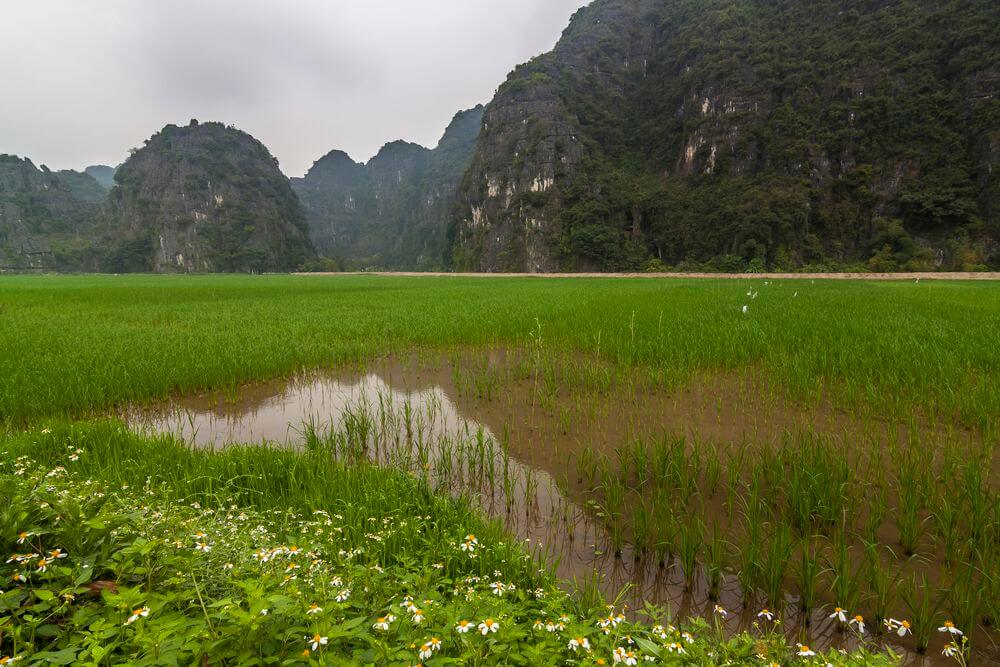


We continue the road towards Dalat, inland. A small friendly stop in the middle of the countryside. Back into the city, Ho Chin Minh City is very nice and we take advantage of it to go sightseeing a bit. We make the most of the opportunity to go to Can Tho and visit the magnificent floating market. We finish our road at the Vietnamese border in Ha Tien, where we spend a few days resting (and eating mangoes as well as other local dishes). For fruit lovers, the Mekong Delta is a paradise.
Welcome to Cambodia
We cross the Vietnam-Cambodia border by motorcycle to the town of Kep, known for its green pepper crab. A quick stop on a small relaxing island, Ko Tonsay (Rabbit Island), does us good. On the program: liters of beer, all-you-can-eat crab shared with Cambodians and midnight bath! We continue on our way to Battambang where we meet Thomas and Pauline, a French couple with whom we sympathize. Fun fact: at the time of writing these few lines, we are back in touch and they just settled in Tahiti. What a small world, isn’t it?
We continue the trip towards the temples of Angkor, where we will spend 3 days discovering wonderful Cambodian World Heritage sites. We try our best to avoid the hordes of tourists and frankly, we are doing pretty well overall. Even if it’s very (very) touristic, I would recommend anyone to spend 3 days there to appreciate these places. A small visit of the city of Pnom Penh is nevertheless a must see for 1 or 2 days.
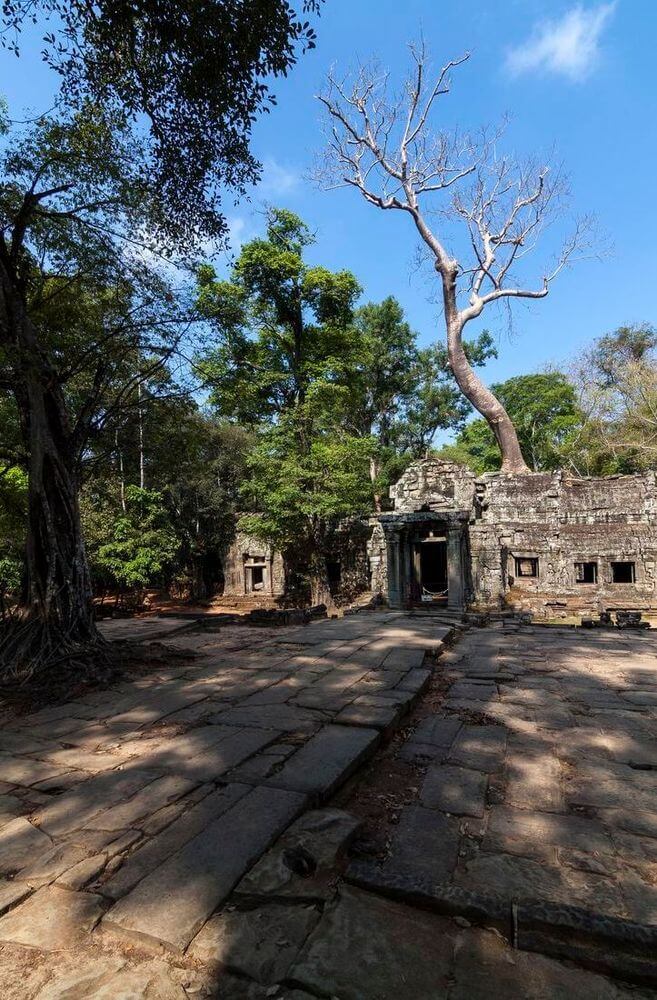




We end our trip in Cambodia with a week in the Mondolkiri region, in the North-East of the country. This is a cooler region, a little bit more mountainous and it was such a nice discovery!
First return to Thailand
We come back by the land border to Thailand, that we left a few months before. The main idea was to rest for a week getaway on an island on the Thai side. Following a beautiful encounter, we settle one week on the Koh Chang island, not far from the border. We spend an amazing week with several Thai families, discussing about local life, tasting typical dishes and sharing. We also take the opportunity to visit Koh Chang, which is very beautiful and way less touristic than some islands in the South of Thailand.
Back to the capital for a few days in Bangkok before flying to Burma for 2 weeks. At the time, we could only enter the country by air. For a few years now, land crossings in certain places seem to be authorized.
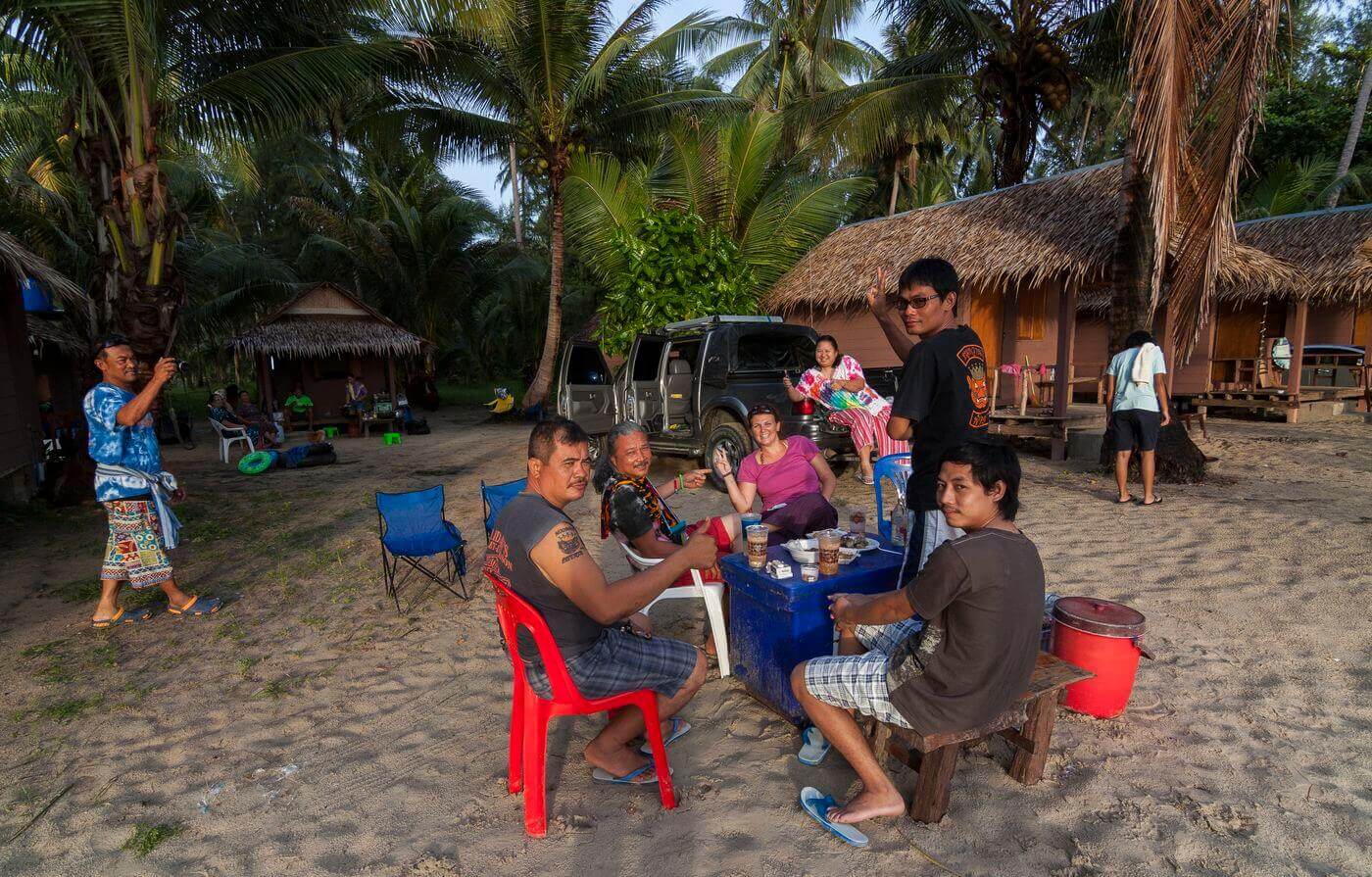
Discovery of Burma
We may set the tone directly: Burma will remain by far our favorite part of our Southeast Asia trip. The contrast with the other countries we just visited is huge, and you are really in something way different! You could even consider that Burma is a little bit “on the edge of Southeast Asia”.
In 2013, the tourism in Burma had just opened little by little, but there was not so much crowds yet. It seems to speed up a bit in the last years apparently. A large part of the country was not even open yet for travellers to visit.
So, we visited the places which were possible, that’s to say the city of Bago and its extraordinary market, the region of the Inle Lake (around Nyaungshwe) or the region around Hsipaw, further north in the mountains. We then went back down to the region of the famous Bagan temples ruins to end our stay with a visit of Yangoon.



The big difference with other South East Asian countries in 2013 was mainly the few people there. Tourism wasn’t really developed yet, and people were really curious to see you here, asked all kinds of questions to exchange, and it was a great experience! In our route, we were several times invited to eat and we made superb, authentic, real encounters. The notion of money related to tourism was frankly not very present at this time, and it’s the first country where we had real exchanges with locals.
We keep a superb memory of this country and I honestly would like to go back and see more of it before it becomes a real tourist factory like some other Asian countries.
Descent towards the South of Thailand
Our passage in the South of Thailand was the only thing not really adjusted to the climate when preparing our itinerary in South East Asia. Indeed, we arrived there theoretically in the middle of the rainy season and in the “off” tourism season (so much the better!).
A little tired after travelling already 6 months, we decide to settle down on a small unknown – or almost unknown – island on the west coast (Andaman Sea): Koh Phayam island. Here, nothing to do but enjoying the landscape, places, small local restaurants. We find a guesthouse closed for several months with a small note on the table: “it’s closed, but you can settle down and pay to this person in the village”. Something inconceivable in France…
We spend a great week in what I consider to be a small paradise: no tourists, heavenly beaches with coconut trees, very tasty Thai food and nothing else to do than reading, eating coconuts and clams that we pick up on the beach. Out of season, we are not far from the perfect island!
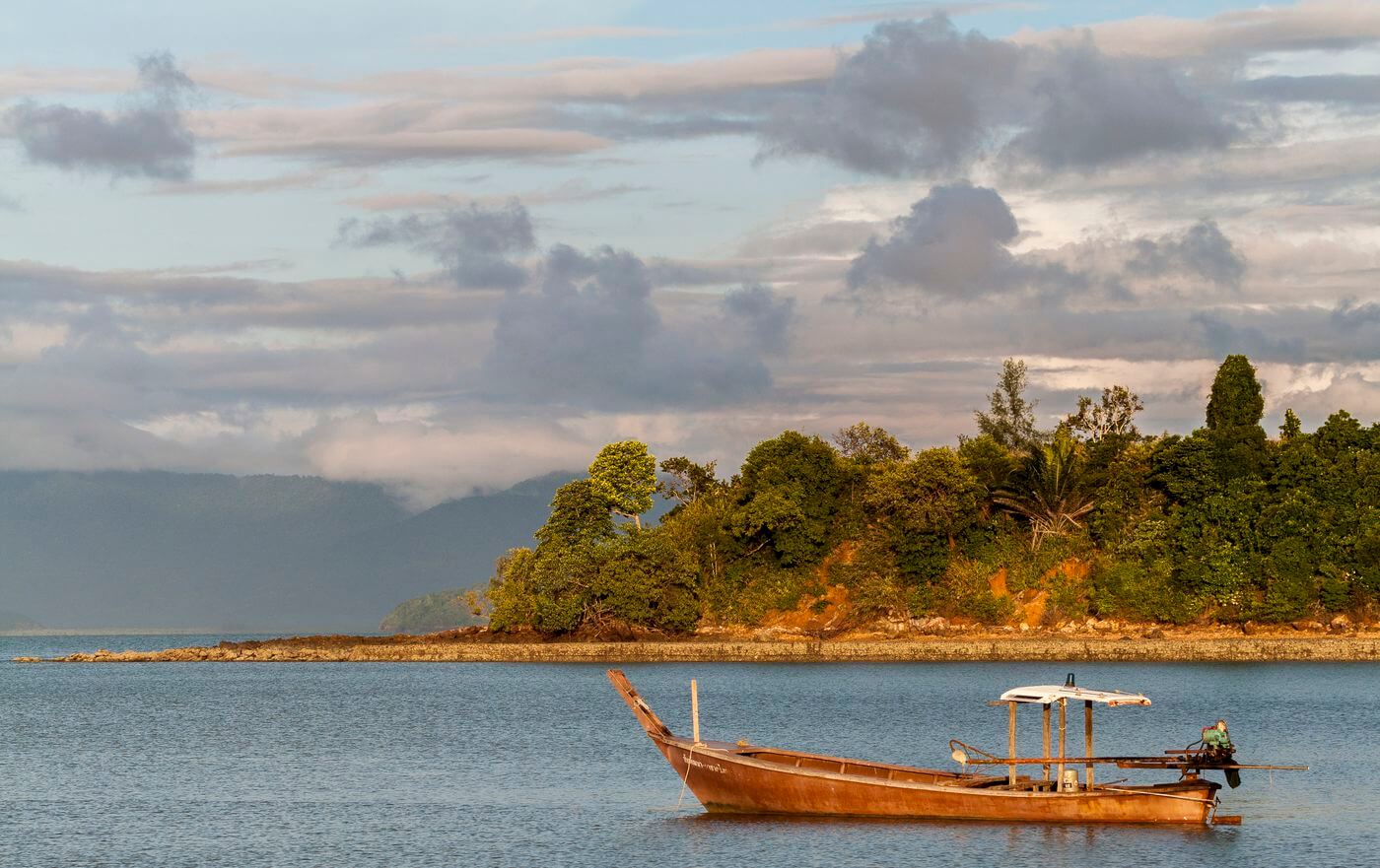
We keep going towards Malaysia and decide to stay on the famous island of Koh Lanta (yes, the same one than the TV show). We will spend there 10 days off-season. There is almost nobody, everything is closed, as well the hotels as the restaurants – a kind of ghost island during the rainy season, which is finally not so unpleasant!
We voluntarily avoid the islands way too touristic for us (Koh Phi Phi, Phuket, Koh Samui etc.) and continue the road to Hat Hai for a passage by train in Malaysia.
Arrival in Malaysia
I must say that we were quite surprised as we arrive in the country, as it seems very “clean” compared to what we have known for these 6 past months. Visiting Kuala Lampur for a few days is nice.
We decide to go North in direction of the Cameron Highlands, especially famous for their tea plantations. It’s chilly up there and the landscapes are pretty different, which is nice to see. Then, we spend a few days on Penang island, a very nice island you can discover by scooter, between Chinese temples, waterfalls and beaches!
We cross then the Malaysian peninsula towards the Perenthian islands, and we now settle down on the supposed quietest island: Pulau Besar. We spend there some beautiful days of relaxation. We have a very good time, still without too many people.
The journey continues with the island of Tioman, where we stay a little week. We decided to go on the other side of the island, known once again as less touristic. We barely see nobody, that’s saying something! We spend excellent moments in this paradisiacal setting.
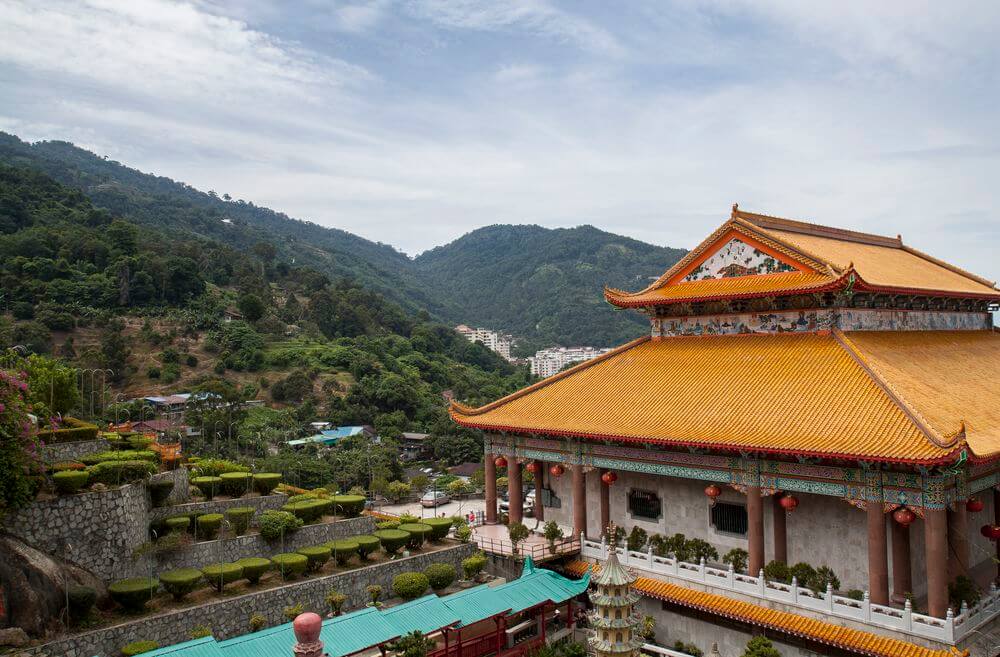

An lightning visit of a few days in Singapore to quickly feel like a European in this trip in Asia. It’s nice, but personally not what I prefer. We return then for the visit of the very beautiful city of Malacca. We were supposed to spend only a few days there, but it will finally be about ten days. Some visits but mainly some rest, well deserved after already 8 months of travel. We take advantage of it to work on the pictures too! We leave Malaysia for the last country of the trip: Indonesia, where we will stay for 2 months (yes, we’ve finally bought our return tickets!).
The discovery of Indonesia!
We had decided to voluntarily avoid the tourist islands like Bali and others, and decided to spend 2 months in the country: one on the island of Sumatra and the other one on Sulawesi island. So, we landed in Medan, capital of Sumatra, a big heaving and polluted city. Not the most charming one, for sure. After some health problems, we continue our road towards the famous place where you can see Orang-Outangs in the forest: Bukit Lawang.
Honestly, we do feel that tourism has arrived there, but I find the atmosphere still very good. We spend 3 days in this superb setting, in the middle of the tropical forest, to observe all these animals. Amazing!
We keep going in direction of Berastagi, where we were planning to go for a hike in the surroundings. 18 km of walk made a superb day at the edge of a volcano. The atmosphere is great, we cross a very few tourists around here, and we live at the locals’ rhythm. We have very good memories of it.
We leave this small sympathetic corner for the famous Lake Toba and the Tuk-Tuk small locality. We will have time, for a few days, to enjoy the area by scooter, and I really recommend to anyone to stop by here and enjoy the surroundings. There are plenty of things to see around the lake: typical house, waterfall, hiking, discovery of the rural area by motorcycle, etc. It will make your trip even more unforgettable!





Unfortunately for us, after an endemic parasite which does not disappear, 10 days of antibiotics, several round trips to the Medan hospital, we have no choice but to mourn over the end of our trip in Indonesia, and not to go to Sulawesi. We are in such a great disappointment, knowing that we had planned to stay 1 month in full-board in some superb diving spots of the country. We are repatriated by our insurance (somehow) to Paris, with a return flight Medan -> Kuala Lampur -> Hong-Kong -> Paris. That’s also part of the trip…
My favorites
On such a long and intense journey, it is difficult to love and appreciate everything. Here are a few favorites for each country, in no particular order.
Thailand: meetings with ethnic minorities in the region of Nan, a small village along the Mekong (Isan) and Koh Phayam
Laos: North of Laos with the discovery of superb landscapes north of Nong Khiaw and along the Mekong river. Visit of a typical village in the countryside with an expatriate (who spoke Laotian).
Vietnam: Motorbike ride north of Sapa, Ha Long Bay (such a beautiful place)
Cambodia: discovering the region of Mondolkiri
Burma: An endearing local population! The country is a favorite in itself. If you can get lost there now, just go.
Malaysia: Tioman Island and Malacca
Indonesia: A great love-at-first-sight with Sumatra, even if we didn’t see all the things we wanted to…
That’s it, I’ll stop here for this first article about Southeast Asia. I did not go into detail of all that we have done, seen and experienced – that was not the purpose here. Instead, it was to retrace our itinerary in Southeast Asia and to give you some trip ideas if you are planning to visit this part of the world.
As a bonus, I leave you via the following link (.kml to open with Google Earth) the complete trip itinerary and all the info about it. You’ll find all the routes (departure-arrival, duration, prices), the accommodations and the places of interest for these 10 months. Quite a job to do, believe me. When you’ll be around the world, I hope this sharing will be useful.
An article about budgeting for a trip to this part of the world will follow. It will mainly be based on our experience as backpackers. In the meantime, here is already a first article about budget for a trip to Thailand.
See you soon,
Sylvain
Despite our care, a mistake may have slipped into this article. If you find any, please don't hesitate to let us know so we can correct it as soon as possible and keep our information up-to-date!










